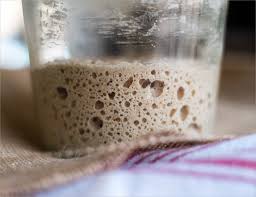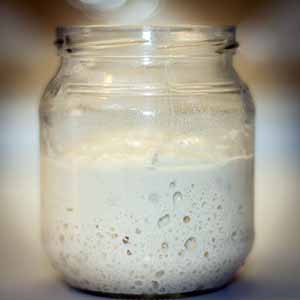Compared to other starter cultures such as yogurt, a sourdough starter is fairly easy to maintain and surprisingly difficult to kill completely. However, there are some conditions that are ideal for sourdough starter, in order to keep it as healthy as possible, here we help you keep yours in tip top condition.

What basic conditions are needed? - (well this is basically the same as all cultures)
-
A nice warm temperature-
A sluggish sourdough starter likely just needs a boost in temperature to get things going.
Remember: Sourdough starter performs best at 21C-29C
Thats not always easy here in the UK especially in winter.
- regular supply of food-
There is some disagreement on the use of freshly-milled flour for feeding a sourdough starter culture. If your starter is sluggish, and you have checked every other factor, try feeding with aged flour to see if the starter becomes more active.
To age flour, place it in a bowl on the counter, covered lightly with a dish towel, for one or more weeks before using it to feed your sourdough culture. Once it is time to bake bread, use freshly ground flour as the flour ingredient in the bread recipe.
Once your sourdough starter is active and healthy, you may switch to a different type of flour for feeding your starter, if desired. If you wish to experiment with different flours, simply use different flours as the ingredient in your recipe while maintaining the starter in its original state.
Always ensure that you use non chlorinated water to feed your starter.

How often should i feed?
Your starter should be fed at least once or twice a day when it is being stored at room temperature and once per week if being rested in the fridge.
so long as you keep your starter well fed and warm then you should not have any issues.
